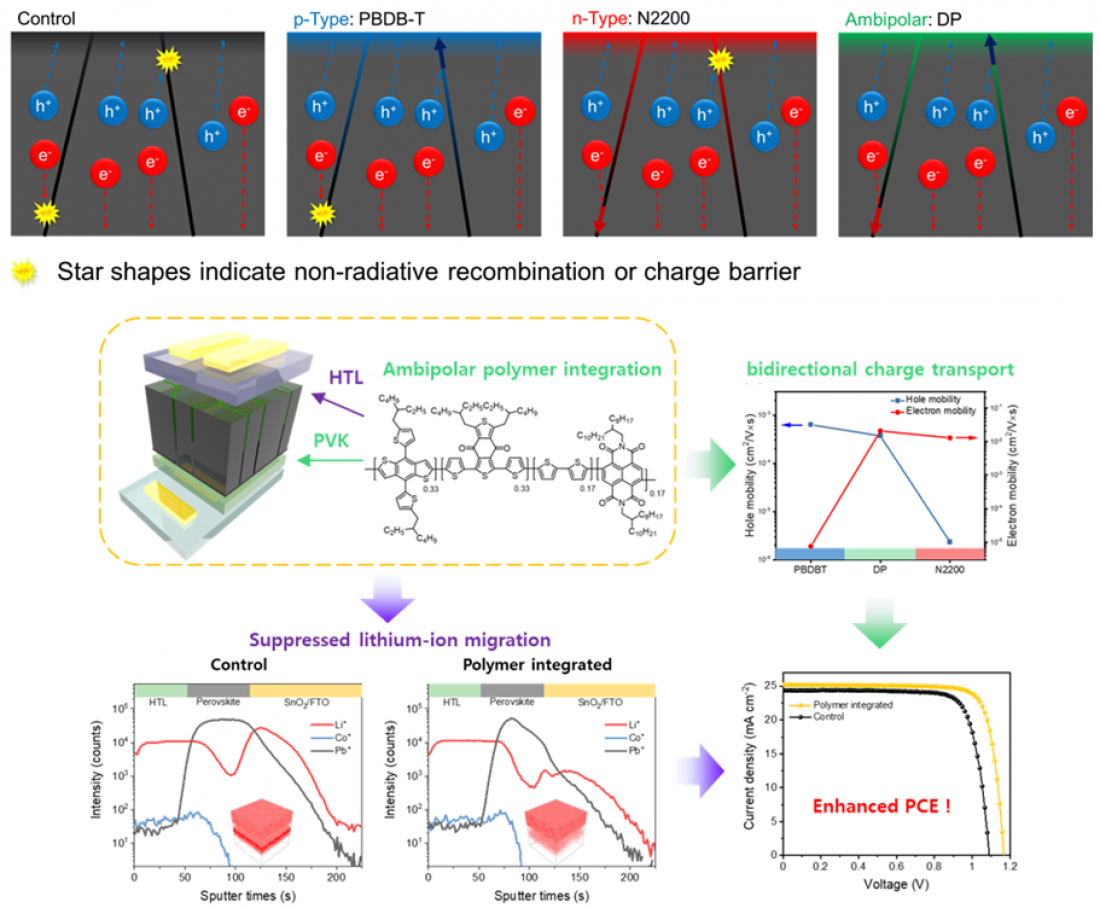□ A research team led by Professor Jong-min Choi at the Department of Energy Science and Engineering, Daegu Gyeongbuk Institute of Science and Technology (DGIST; President Young Kuk), announced on October 27 (Friday) that they suggested a strategy to enhance the performance and stability of perovskite solar cells by introducing bipolar polymers through joint research with Professor Bum-joon Kim’s research team at the Department of Chemical and Biomolecular Engineering, Korea Advanced Institute of Science and Technology (KAIST; President Kwang-hyung Lee).
□ As one of the materials used in solar cells, organic halide perovskite (hereinafter referred to as perovskite) converts sunlight into electricity. Perovskite has been highlighted as a next-generation solar cell material due to its remarkable photoelectric properties and low processing cost. However, there has been difficulties with its commercialization due to performance degradation and lower stability caused by defects. In particular, oxygen and moisture in the atmosphere exaggerate defects and accelerate performance degradation. Hence, a process to repair defects to achieve perovskite solar cells with high efficiency and stability is necessary.
□ In this context, Professor Choi’s research team introduced the world’s first bipolar polymers to repair perovskite defects. Traditional p-type and n-type polymers repaired perovskite defects, but the problem was that they hindered the transfer of opposite charges. By contrast, this research team’s bipolar polymers solved conventional shortcomings by repairing perovskite defects and improving the transfer of all charges (electrons and electron holes).
Furthermore, they found significant defects with the traditional defect repair process, and developed a method to perform additional repair by mixing bipolar polymers into the electron hole transfer layer. It strengthened defect repair and provided other benefits, such as pinhole (small hole) suppression. Furthermore, to address safety issues with the current high-efficiency perovskite solar cells, they also developed a method to suppress the diffusion of ions with the remaining bipolar polymers to maximize device stability.
□ Professor Jong-min Choi at the Department of Energy Science and Engineering, DGIST said, “With this research, bipolar polymer passivation can dramatically improve the performance of perovskite by maximizing bidirectional charge transfer. It is expected to accelerate the commercialization of perovskite solar cells by demonstrating the cells’ normal operation over a long period of time under not only normal atmospheric conditions but also high temperature and humidity (85℃ and 85% relative humidity).”
This research was conducted in collaboration with Professor Bum-joon Kim’s research team at KAIST and led by Soo-kwan Kim, a student in the combined masters and PhD program at DGIST, and Dr. Jin-seok Kim at KAIST. Furthermore, this research was funded by the National Research Foundation of Korea and the DGIST R&D Program, and the results were published in Advanced Energy Materials, an international journal, as a cover article on September 1, 2023.
corresponding author E-mail address : [email protected]



